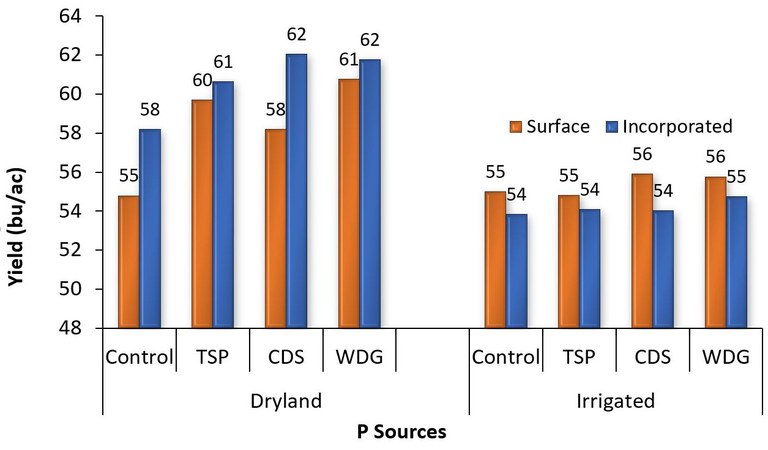Soybean Response to Distillers Grains as Sources of Phosphorus
Recent wheat and corn studies from Carrington have shown that distillers grains are a good source of available nutrients when applied on cropland. Yields from distillers grains were always greater or similar compared to triple super phosphate (TSP) granular phosphate fertilizer.
In 2020, dryland and irrigated trials were conducted to examine the effect on yields and nitrogen fixation (ureide content) of soybeans following application of distillers grains at rates to supply 40 lbs of phosphorus (87 lbs P2O5).
Wet distillers grains (WDG) was applied at 1.8 T/ac, and condensed distillers solubles (CDS) was applied at 190 gal/ac. WDG also supplied 66 lbs N, and CDS supplied 33 lbs N. A control treatment received no P fertilizer, but received 33 lbs N from urea. All treatments were either incorporated or left on the surface.
RESULTS
Yields under irrigation were low compared to dryland (Fig 1.), even though both trials were fertilized just a day apart, but incorporated and planted same day. Yields were not negatively impacted by distillers grains application.
Under dryland, yields from P fertilized plots and incorporated treatments were numerically greater than from the control treatment (no P fertilizer).
Under irrigation, yields were neither affected by fertilizer treatments nor method of application.

Fig. 1. Yields of dryland and irrigated soybeans in response to distillers grains and granular fertilizers as sources of phosphorus applied and incorporated, or left on the surface.
There was no evidence that N fixation (ureide content) was adversely impacted by the higher N (66 N/ac) supplied with WDG when compared to the 33 lbs N from either CDS or urea. This could be due to a slow but gradual release of the N available from WDG.
Acknowledgement: This research was funded by the North Dakota Soybean Council.
Jasper M. Teboh, Ph. D.
Jasper.Teboh@ndsu.edu
Soil Scientist


